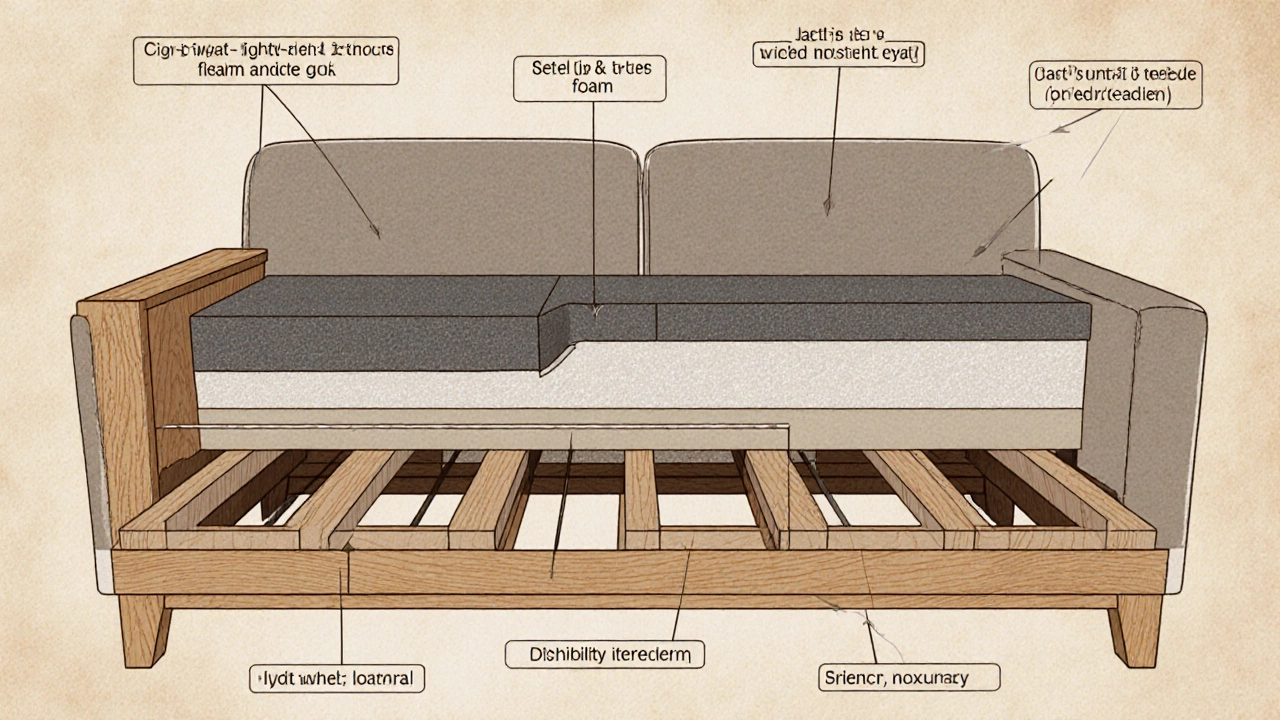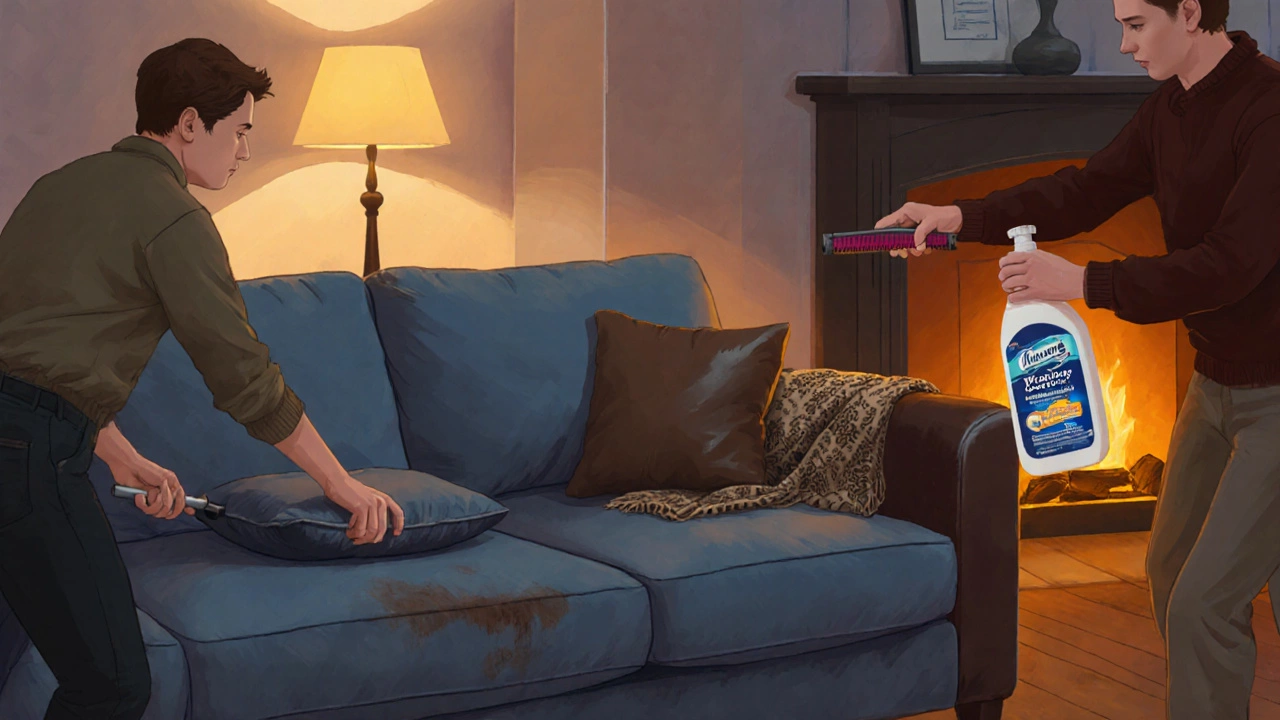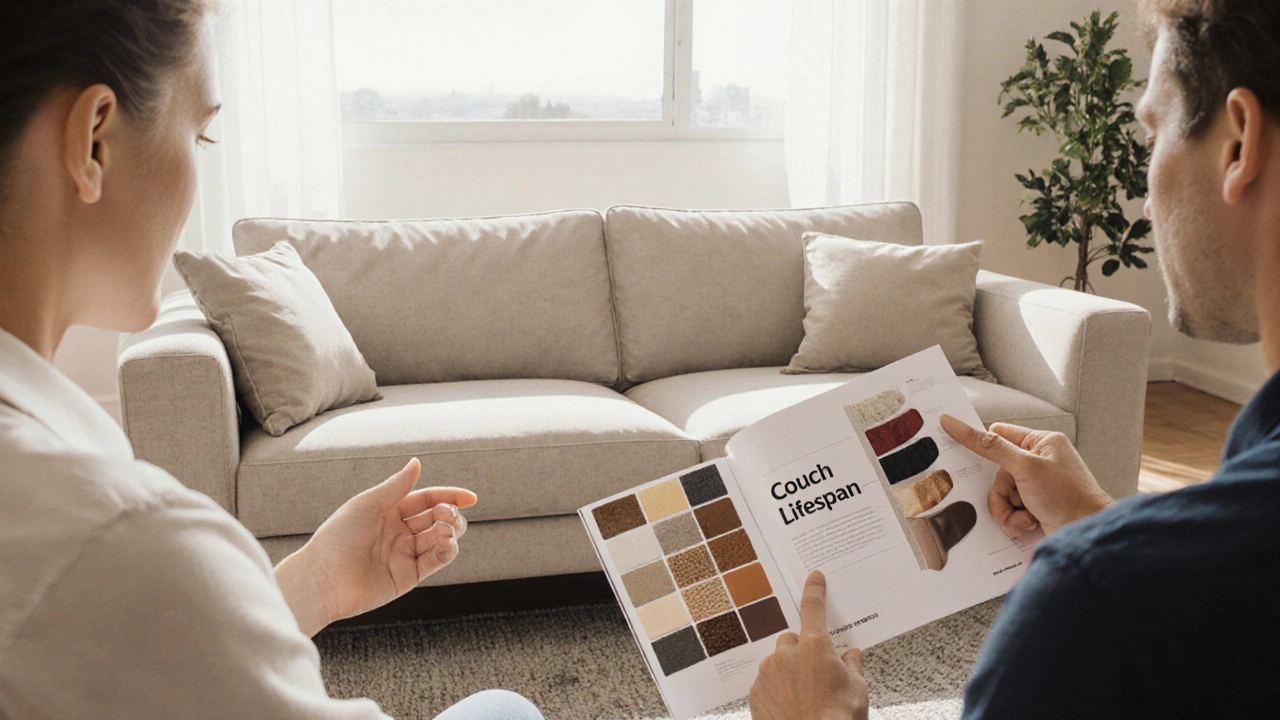Couch Lifespan Estimator
How Long Will Your Couch Last?
Estimate your couch's lifespan based on material quality, construction, and care habits.
Your couch is expected to last years.
Maintenance Tip:
When you buy a new Couch is a upholstered seating piece designed for living rooms, often synonymous with a sofa, you want to know how many years it will stay comfortable and look good. That answer isn’t a single number - it varies by materials, construction, how you use it, and how well you take care of it. Below you’ll find the facts that help you estimate the couch lifespan you can expect in real life.
Key Takeaways
- Average lifespan of a well‑made couch ranges from 7 to 15 years.
- Frames built from hardwood and eight‑way hand‑tied springs last the longest.
- Leather and high‑quality fabric can add 2‑4 years compared to low‑grade upholstery.
- Regular cleaning, rotating cushions, and protecting against sunlight extend life.
- Replace a couch when the frame creaks, cushions lose shape, or upholstery tears.
Typical Lifespan by Material
| Upholstery | Typical Lifespan (Years) | Key Strengths |
|---|---|---|
| Leather | 12‑15 | Durable, ages well, easy to clean |
| High‑grade Fabric (e.g., velvet, chenille) | 10‑13 | Soft feel, good wear resistance |
| Mid‑grade Fabric (cotton blends, polyester) | 7‑10 | Affordable, decent durability |
| Low‑grade Fabric (cheap blends) | 5‑7 | Budget‑friendly, wears quickly |
| Microfiber | 9‑12 | Stain‑resistant, soft, easy care |

How Construction Impacts Longevity
The frame is the backbone of any couch. A Frame is the wooden or metal skeleton that supports the cushions and upholstery made from kiln‑dried hardwood (like oak, maple, or ash) can last 15 years or more, while a soft‑wood or particle‑board frame may start to sag in as few as three years.
Another crucial component is the Springs are metal coils that provide bounce and support for the seat cushions. Eight‑way hand‑tied springs, the gold standard, keep their shape longer than sintered or continuous‑coil springs. Expect hand‑tied springs to retain comfort for 10‑12 years; cheaper alternatives often lose resilience after 5‑6 years.
Cushions themselves are typically filled with foam, down, or a foam‑down blend. High‑density foam (≥30lb/ft³) holds shape for 8‑10 years, while low‑density foam can become flat in 3‑4 years. Down adds plushness but needs regular fluffing and can lose loft sooner.
Usage Patterns and Environment
How often you sit on the couch and who sits on it matters. A family with kids and pets will see faster wear than a single adult. Heavy daily use compresses springs and foam quicker. Sunlight exposure fades fabric and dries out leather, cutting years off the life. Keep the couch away from direct windows or use UV‑filtering curtains.
Humidity and temperature also affect wood frames. In very dry climates, wood can crack; in humid rooms, it may warp. Using a humidifier or dehumidifier helps keep the wood stable.
Maintenance Tips to Extend Life
Simple habits go a long way:
- Rotate cushions every 3‑4 months to even out wear.
- Vacuum fabric regularly with a brush attachment to lift dust.
- Spot‑clean spills immediately using a gentle cleaner appropriate for the upholstery type.
- Apply a leather conditioner every 6‑12 months if you own a leather couch.
- Use slipcovers or throws in high‑traffic areas to protect the fabric.
- Check and tighten any loose screws in the frame annually.
These steps can add 2‑4 years to the overall lifespan.

Warning Signs It’s Time to Replace
Even with good care, a couch will eventually need replacement. Look for these red flags:
- Persistent creaking or popping noises from the frame.
- Cushions that no longer spring back after pressing.
- Upholstery tears, holes, or severe stains that won’t come out.
- Odors that stay despite cleaning, indicating mold or mildew.
- Visible sagging of the seat or back that affects comfort.
When two or more of these appear, start budgeting for a new couch.
Understanding Warranty and Manufacturer Claims
Many manufacturers offer a 5‑year warranty on frames and a 2‑year warranty on upholstery. These numbers give a rough safety net but don’t guarantee total lifespan. Always read the fine print - some warranties only cover structural defects, not normal wear.
When comparing options, use the warranty as a secondary indicator of build quality. A longer frame warranty usually means a sturdier frame.
Frequently Asked Questions
How long should a good quality couch last?
A well‑built couch with hardwood frame, high‑density foam, and quality upholstery typically lasts 10‑15 years with proper care.
Does leather really last longer than fabric?
Yes. Leather is more resistant to tearing and can be refinished, giving it an extra 2‑4 years compared to most mid‑grade fabrics.
What maintenance routine adds the most years?
Regularly rotating cushions, vacuuming, and promptly treating spills are the biggest contributors to extending a couch’s life.
Can I fix a sagging couch myself?
Minor sagging can be eased by tightening frame screws or adding extra support slats. Severe sagging usually means the frame or springs need professional repair or replacement.
Is a couch with a metal frame better?
Metal frames can be strong, but they may dent or rust over time. Hardwood frames are generally preferred for durability and easier repair.


Write a comment